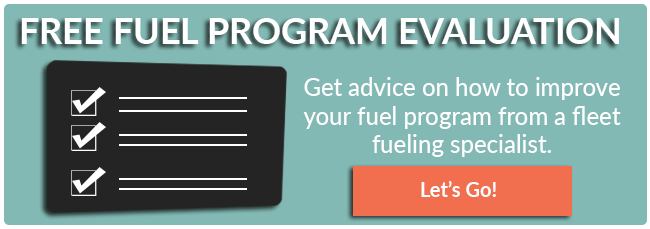If you’re reading this, you are probably suspecting that one of your employees is misusing the company fuel card. Whether it’s fueling a personal vehicle or they have “the in” with a cashier at the local gas station to push through some c-store items.
Now you’re probably thinking I got a fuel card to handle this exact situation, but it didn’t work. Now what can I do to stop employee fuel card theft?
Fortunately there’s tools fuel cards have that you might not be aware that can help you stop this problem immediately.
1) Set Up E-receipts Or Purchase Alerts
Most fuel cards have the ability to send a fuel receipt or purchase alert immediately after every transaction via email or text. If you catch the driver is fueling more often than they are supposed, you can call them on the spot and deal with the problem.
Once word gets out that the boss is receiving receipts after every transaction, drivers will usually stop playing games.
This works for most smaller fleets where managers will have to look over 10 e-receipts a day. Now if you operate a larger fleet where you would get 100’s or receipts per day you should use exemption notices instead. These notices will only notify you when a driver buys the wrong type of fuel or tries to purchase outside of the setup controls for the fuel card.
2) Audit Your Fuel Card Controls
Ask your fuel card provider to give you an updated card list with all the controls associated to the cards and make sure the controls are still relevant for the vehicle and the driver.
For example a small box truck will never need to purchase 100 gallons of fuel so make sure you limit the gallon limits to the max fuel tank size. Check out this article for a complete list of fuel card controls.
3) Review Your Transactions
Don’t wait for the invoice to review your fuel card transactions. Login to your fuel card account at least every couple of days to look over your transactions by driver or vehicle. Are there any drivers fueling up more than they should? Is the mpg report consistent with the vehicle’s standard mpg?
If it’s not, the driver might be meeting someone at the gas station to fuel up a personal car on the same transaction. 10 gallons for his company truck and 10 gallons for his personal car and all you see is a 20 gallon transaction. But if you notice his van that gets 20 miles to the gallon only travels 200 miles on 20 gallons (10 mpg) you’ll catch the problem.
4) Establish A Driver Fuel Card Policy
Draft up a driver fuel card policy that formally holds your drivers accountable for every purchase and that every driver understands the responsibility of using a fuel card. This will set the standard that it’s a very serious violation if a fuel card is used inappropriately.
Get a head start and download a free driver fuel policy template.

